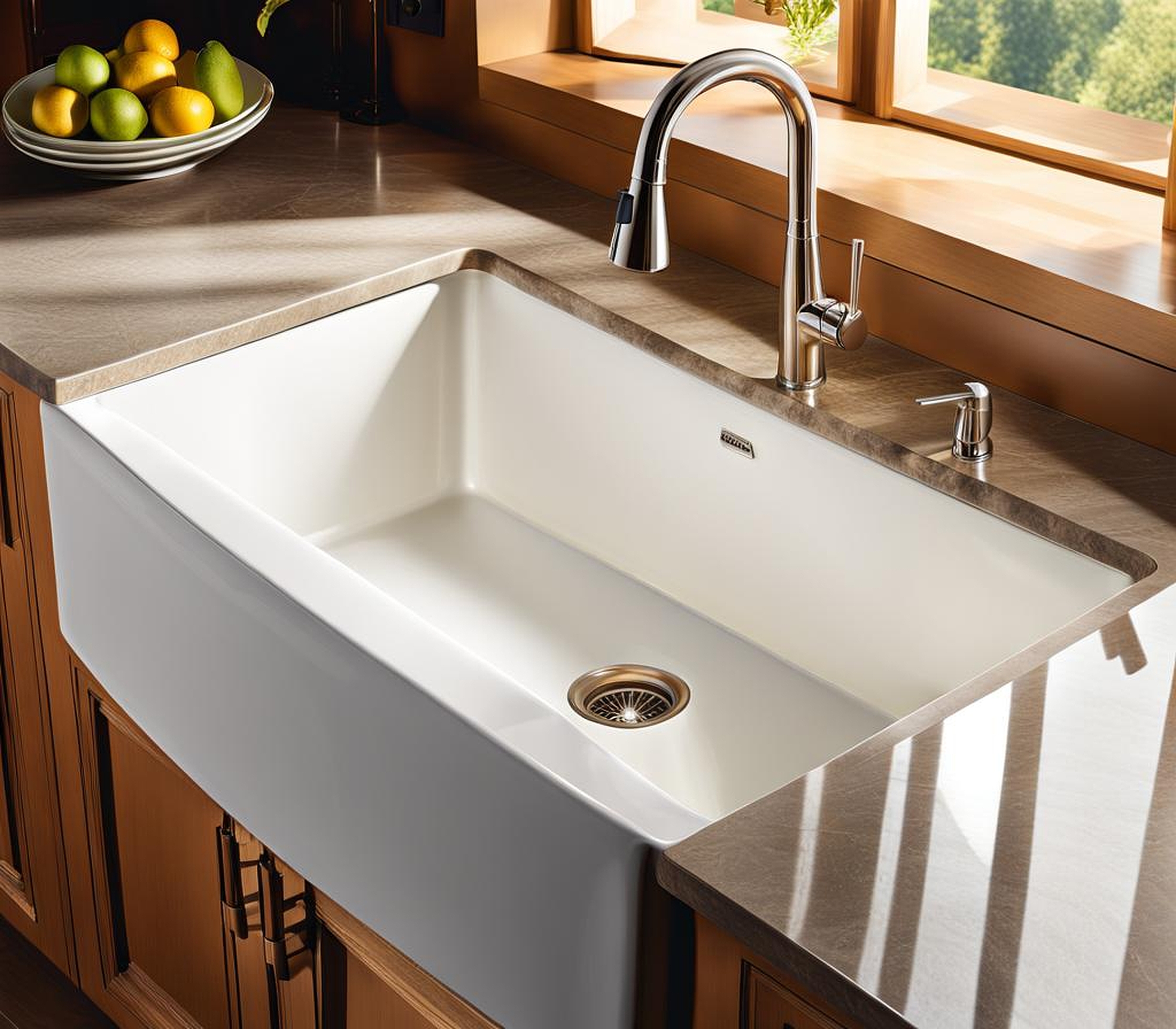Choosing the perfect farmhouse sink size can elevate your kitchen’s style while ensuring optimal functionality. This comprehensive guide delves into the standard farmhouse sink size, empowering you to make an informed decision tailored to your space and needs. Let’s embark on a journey to unravel the intricacies of these charming sinks.
Understanding Farmhouse Sink Dimensions
A farmhouse sink, also known as an apron-front sink, is a deep basin that extends beyond the cabinetry, offering a rustic and inviting allure. Its distinctive design captivates with a blend of vintage charm and modern practicality. The size of a farmhouse sink is influenced by various factors, including kitchen layout, countertop depth, and personal preferences.

While there is no one-size-fits-all approach, certain standard dimensions have emerged as industry norms. Typically, farmhouse sinks range from 30 to 36 inches in width and 9 to 12 inches in depth. The basin’s depth can vary from 7 to 10 inches, accommodating everything from oversized pots to delicate stemware with ease. Understanding these guidelines empowers you to navigate the realm of farmhouse sink dimensions confidently. It’s essential to consider the overall kitchen footprint and ensure the sink size complements the surrounding cabinetry and countertops for a cohesive and balanced design.
Single Bowl vs. Double Bowl Farmhouse Sinks
Farmhouse sinks are available in both single and double bowl configurations, each offering unique advantages. Single bowl sinks provide an expansive workspace, allowing you to effortlessly maneuver large cookware or accommodate sizable tasks like washing oversized items. On the other hand, double bowl sinks offer compartmentalized functionality, enabling you to separate washing, rinsing, and drying tasks seamlessly.
For single bowl farmhouse sinks, common dimensions range from 30 to 36 inches in width and 9 to 12 inches in depth, with a basin depth of 7 to 10 inches. Double bowl farmhouse sinks typically measure 33 to 36 inches wide, with each basin spanning 15 to 18 inches in width and maintaining a similar depth to their single bowl counterparts. When selecting between these options, consider your household size, cooking habits, and cleanup routines to determine which configuration aligns best with your needs.
Countertop Depth and Farmhouse Sink Size
Countertop depth plays a crucial role in ensuring a seamless installation and a visually cohesive kitchen design. When selecting a farmhouse sink size, it’s essential to account for the countertop depth to prevent the sink from protruding excessively or appearing disproportionate.
As a general guideline, a standard countertop depth of 24 to 25 inches can comfortably accommodate farmhouse sinks up to 10 inches deep. For deeper sinks or those with an apron front design, a countertop depth of 27 inches or more is recommended. This extra depth allows the sink to integrate seamlessly while providing ample space for comfortable use and maintenance. It’s worth noting that some homeowners opt for deeper countertops specifically to accommodate larger farmhouse sinks, creating a striking focal point in the kitchen.
Choosing the Right Farmhouse Sink Size for Your Kitchen
Selecting the ideal farmhouse sink size is a delicate balance between functionality and aesthetics. Consider your kitchen layout, workflow, and overall design aesthetic when making this decision. For compact kitchens, a smaller sink size, such as 30 inches wide and 9 inches deep, may be the most practical choice, maximizing counter space while still delivering ample sink capacity.
Larger kitchens with ample counter space can accommodate more substantial sink sizes, such as 36 inches wide and 12 inches deep. These grand sinks make a bold statement while providing a generous workspace for meal preparation and cleaning tasks. Additionally, account for sink depth and apron style when determining the appropriate size, ensuring a cohesive and visually appealing integration with your kitchen cabinetry. Don’t forget to factor in the height of the sink, as some farmhouse models can be quite tall, potentially affecting the ergonomics of your workspace.
Installation and Retrofitting Guidelines
Proper installation is crucial for maximizing the functionality and longevity of your farmhouse sink. If you’re embarking on a new kitchen renovation, ensure your cabinetry is designed to accommodate the specific sink size you’ve chosen. This may involve adjustments to the cabinet depth, support structure, and countertop overhang.
For retrofitting scenarios, where you’re replacing an existing sink, precise measurements are essential. Carefully assess the available cabinet space and countertop depth to determine if any modifications are required. In some cases, cabinet reinforcement or adjustments may be necessary to support the weight and dimensions of the new farmhouse sink. Additionally, consider the placement of plumbing lines and drainage systems, as these may need to be adjusted to accommodate the new sink configuration.
While a DIY approach is possible for experienced homeowners, professional installation is recommended to ensure a flawless and secure fit. Skilled contractors have the expertise to handle any necessary cabinet modifications, plumbing adjustments, and precise sink placement, ensuring a seamless and long-lasting installation.
Farmhouse sinks are available in a variety of materials and styles, each offering unique characteristics and aesthetic appeals. Fireclay, a durable and timeless choice, is known for its glazed finish and ability to withstand the rigors of daily use. Cast iron sinks exude a classic charm while boasting exceptional strength and heat resistance. Stainless steel farmhouse sinks provide a modern twist, offering easy maintenance and a sleek appearance.
In terms of style, traditional farmhouse sinks embrace a rustic aesthetic, often featuring an apron front and deep basin. These sinks evoke a sense of nostalgia and complement farmhouse, cottage, or rustic kitchen designs seamlessly. Modern interpretations, on the other hand, incorporate sleek lines and contemporary finishes, seamlessly blending with contemporary kitchen designs. Some even feature integrated drainboards or workstations for added functionality.
When selecting your farmhouse sink, consider the overall aesthetic you wish to achieve, harmonizing the material and style with your kitchen’s ambiance. Additionally, evaluate the maintenance requirements of each material to ensure it aligns with your lifestyle and cleaning preferences.